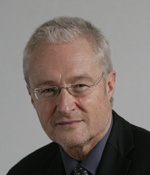‘ACLP recognizes its SIGs as the lifeblood of the organization’
A new SIG policy adopted by the ACLP Board provides a new administrative structure to manage SIG growth.
Academy leaders responsible for their SIG will work with SIG chairs at least annually to review SIG membership and ensure membership information is up to date.
Their reports will include a roster of participants at SIG meetings at the annual meeting, a synopsis of the group’s activities for the year, and an update of SIG contact information posted on the Academy website.
All SIG membership reports will be reviewed by the Academy’s Governance Committee at least every three years — and the committee will consider ‘sun-setting’ some SIGs if a review of their activity, productivity, and continued relevance to the Academy suggests they have become obsolete.
Metrics reviewed by the Governance Committee will include:
A change in leadership or dissolution of a SIG will be recommended to the Board by the Governance Committee, if, over two consecutive years, one or more of the following is not achieved:
The ACLP Board will normally approve a maximum of five SIGs per year. Applications will be reviewed in June. If there are more than five SIGs proposed in one year, the Governance Committee will consider the interest level, timeliness, and merit with the Executive Committee for any exceptions.
SIG chairs will serve a three-year term with an option to renew for a second term. Incoming chairs/vice-chairs will be selected by the current SIG chair or when forming a SIG. It is intended that the vice-chair becomes chair when the chair’s term expires. The vice-chair should also serve as backup representation for the chair if necessary.
Subscribers to SIGs formed after July 1, 2020 are now restricted to current Academy members only. However, as is Academy tradition, anyone, Academy member or not, may still be invited to participate as guests in SIG activities such as SIG meetings or presentations at the annual meeting.
A recent analysis of SIG subscribers shows the proportion of ACLP members to non-ACLP members:
| SIG | Total SIG Subscribers |
ACLP Members |
Non-ACLP Members |
| Addiction & Toxicology | 135 | 114 | 21 |
| Bioethics | 447 | 370 | 77 |
| Burn & Trauma Injury | 17 | 15 | 2 |
| Cardiovascular Psychiatry | 307 | 243 | 64 |
| Collaborative & Integrated Care | 102 | 86 | 16 |
| Community-Based CLP Physician Practice Issues | 290 | 220 | 70 |
| Early Career Psychiatrists | 635 | 498 | 137 |
| Emergency Psychiatry | 569 | 427 | 142 |
| Geriatric Psychiatry | 72 | 61 | 11 |
| Global & Cultural | 321 | 253 | 68 |
| HIV/AIDS Psychiatry | 500 | 275 | 225 |
| Integrative Medicine (Complementary & Alternative Medicine) |
218 | 171 | 47 |
| Medicine & Psychiatry | 854 | 674 | 180 |
| Military & Veterans | 126 | 103 | 23 |
| Neuropsychiatry | 691 | 536 | 155 |
| Palliative Medicine & Psycho-oncology | 507 | 416 | 91 |
| Pediatric C-L Psychiatry | 237 | 175 | 62 |
| Proactive C-L Psychiatry | 105 | 95 | 10 |
| Psychological Considerations | 323 | 258 | 65 |
| Quality & Safety | 129 | 104 | 25 |
| Research | 310 | 259 | 51 |
| Telepsychiatry | 476 | 366 | 110 |
| Transplant Psychiatry | 444 | 323 | 121 |
| Women’s Health | 500 | 378 | 122 |
SIGs existing before the adoption of this policy may, if they so wish, elect to require current Academy membership of all of their members (with the approval of the Academy’s Governance Committee and subsequent approval by the ACLP Board). Once implemented, an Academy membership requirement for a SIG cannot be rescinded.

“ACLP recognizes SIGs as the lifeblood of the organization,” says ACLP president, Michael Sharpe, MD, FACLP. SIGs serve to bring members with shared interests together. They provide vital networking, mentoring, and collaborative support to their members and, as the organization grows, SIGs remain a vibrant avenue through which members can make professional connections. SIGs also develop and deliver a significant portion of the educational content of our annual meeting through preconference courses and general sessions.
“The importance of SIGs to the ACLP make it even more compelling that SIGs should be brought more clearly under the umbrella of the Academy’s governance for the well-being and long-term future sustainability of the Academy. Such governing principles apply to all components of our process and procedures for the benefit of the whole ACLP membership.”
Beyond the designation of chair and vice-chair, SIGs are free to establish a working and leadership structure that supports their activities. For example, a large or busy SIG may, at their discretion, appoint others to leadership roles such as a trainee or ECP chair, communications coordinator, or relevant subgroup chairs, without the need for Academy Board approval.